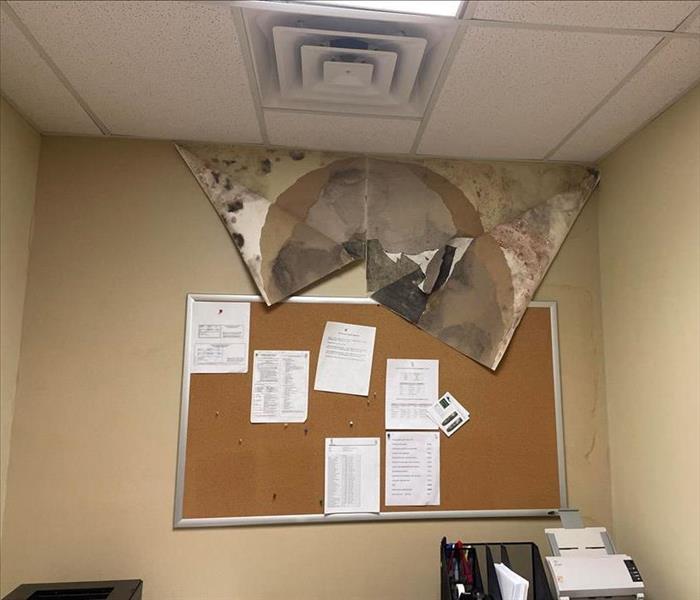How Can Wallpaper Lead to Mold Growth?
2/8/2022 (Permalink)
Decorative wallpaper is back in style. Interior designers and DIYers are using this popular 20th-century material to create accent walls or add texture to their spaces. Unfortunately, every restoration professional will warn you not to. Why? In certain conditions, mold will begin to grow behind wallpaper and can go undetected until becoming a major problem.
Buildings need to breathe. Air and moisture pass through building envelopes, diffusing slowly to stabilize water vapor pressure differentials between the environment inside and outside of the property. For example, weep holes provide airflow through brick and other masonry walls.
Wallpaper is essentially a vapor barrier. When moisture is trapped behind wallpaper, mold may begin to grow on the drywall, insulation, and framing inside the wall cavity. This is especially common in hot, humid environments where condensation may occur due to hot air outside and cold air inside clashing.
As mold remediation professionals, our team has found growth hiding behind wallpaper many times. If you choose to decorate with wallpaper, then our best advice is to avoid areas prone to water damage or rooms with high humidity. Never hang wallpaper on exterior walls or in bathrooms. The safest bet is to only apply wallpaper to interior walls that do not have plumbing running through them.
Some common indicators of microbial growth lurking behind wallpaper are stains or discolored patches, wallpaper edges curling upward, and a musky, mildew odor. If you notice one of these issues in your home or business and suspect microbial growth, then contact our office to schedule a site inspection today. Our team will help identify any moisture issues and create a remediation protocol if microbial growth is discovered.






 24/7 Emergency Service
24/7 Emergency Service
